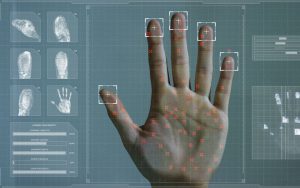
In 2D culturing systems, the bioavailability of substances is difficult to evaluate. These can adversely affect cell morphology, cell cycle progression, cell survival, and intracellular signaling, potentially resulting in false positive or false negative data acquisition. The lack of the proper cell–cell and cell–matrix contacts results in change of gene and protein expression profiles. Among the disadvantages of 2D cultures is the lack of 3D extracellular matrix (ECM) that surrounds the cells and creates the microenvironment in vivo. 2D-culturing systems remain the predominant approach used for screening and testing new soluble factors and therapeutic agents due to their feasibility. Regeneration in the nervous system is difficult to investigate due to the high complexity of neuronal network and the difficulty in culturing neural cells.

Therefore, there is a demand for new approaches to stimulate effective peripheral nerve regeneration after injury. Despite meticulous surgical techniques and non-surgical treatments, fully functional recovery is rarely achieved. Peripheral nerve injuries remain one of the most significant causes of disability and have a marked impact on patients’ everyday lives. Although NGF significantly stimulated glial cell migration, its effect on axon growth was insufficient for axon regeneration. On the basis of the aforementioned finding, we concluded that GDNF had the greatest stimulating potential for axon regeneration, as it stimulated not only the axon outgrowth, but also glial cell migration. We found that NGF and GDNF, but not BDNF, stimulated the migration of Nestin-GFP cells compared to the control ( p < 0.05). For this reason, we evaluated the number of Nestin-GFP-positive cells that migrated from the DRG into the Matrigel in our 3D ex vivo explant model. It is well-known that axon growth can be stimulated by activated glial cells that fulfill a trophic function for regenerating nerves. We revealed that GDNF significantly (two fold) stimulated axon outgrowth ( p < 0.05), but not BDNF or NGF.

For the current study, we used Nestin-GFP-expressing mice in which neural precursors express Nestin and the green fluorescent protein (GFP) under the same promoter. By analyzing the DRG explants in ex vivo culture for 21 days, one can evaluate the parameters of neurite outgrowth and the rate of cell migration from the DRG explants into the Matrigel. Our method generally represents a convenient model for assessing the effects of soluble factors and therapeutic agents on axon growth and nerve regeneration in R&D studies. In the present study, we evaluated the effect of certain neurotrophic factors (NGF, BDNF, and GDNF) on axon growth and migration of Nestin-green fluorescent protein (GFP)-positive cells using a 3D model of dorsal root ganglion (DRG) explant culture in Matrigel. Neurotrophic factors play a key role in the development, differentiation, and survival of neurons and nerve regeneration.


 0 kommentar(er)
0 kommentar(er)
